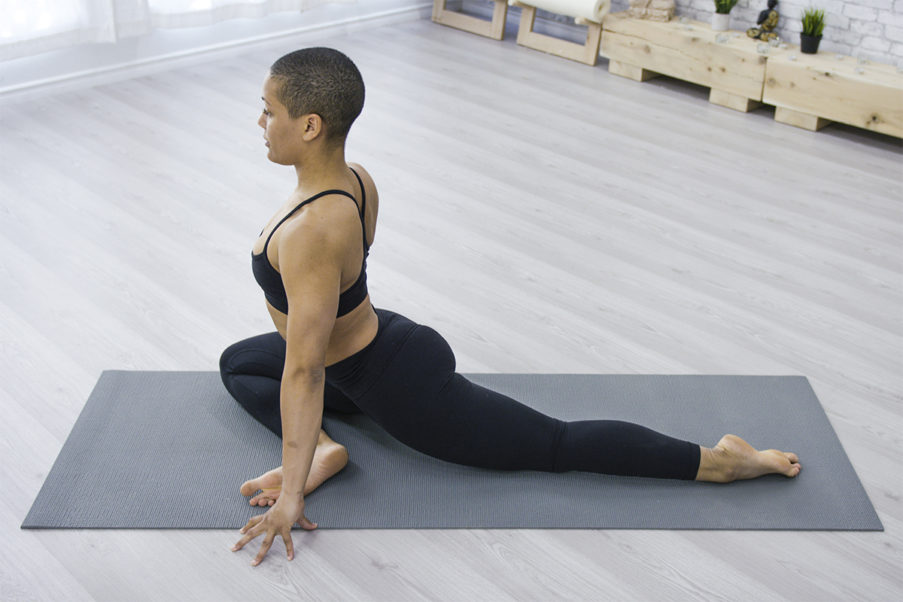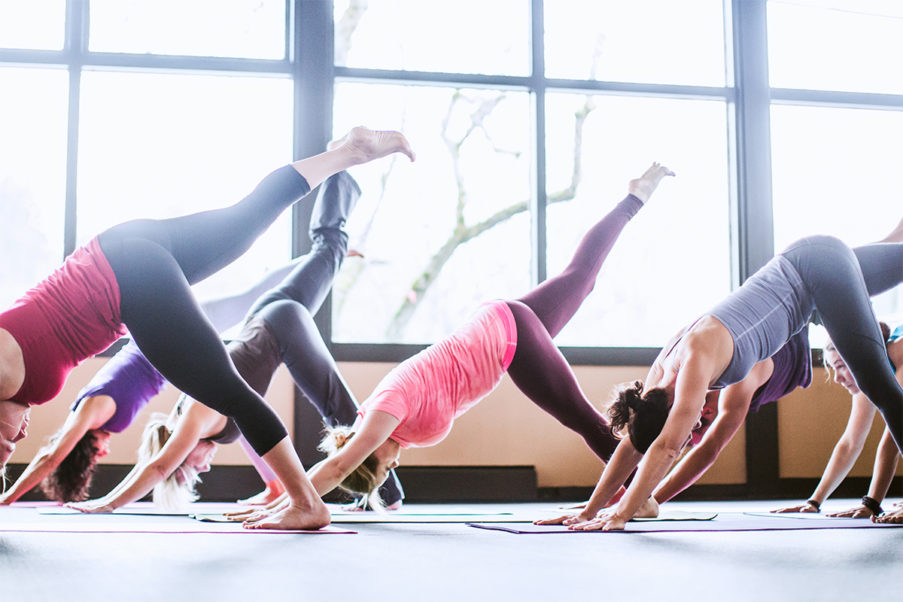Yoga Lesson Plan 5: Core Strength
About this series: Each yoga lesson plan provides both a physical focus, to guide your choice of postures, and a practice focus, to help students explore an important principle of yoga practice. The intention of the series is to present guidelines for creating a coherent and thoughtful class experience, with suggestions broad enough to allow you to choose yoga poses that are appropriate for your students.
Yoga Lesson Plan 1 Yoga Lesson Plan 4
Yoga Lesson Plan 2 Yoga Lesson Plan 6
Physical theme: Core Strength
Practice principle: Using the breath as a source of inner strength.
What is core strength? For that matter, what is the “core” of the body? And from a yogic perspective, what is the core of who we are? The physical focus of this yoga lesson plan is a balanced approach to core strength, and the broader focus is finding a deep inner strength that supports everything we do.
Core Strength
Many students who walk into your classroom will have a limited perspective on core strength, tied up in ideas about “abs of steel” and endless repetitions of traditional abdominal exercises. If they are thinking about any core muscles, it’s most likely to be the rectus abdominus—the most superficial abdominal muscle that creates the appearance of a six-pack and pulls us into a traditional abdominal crunch. They won’t be thinking about the deeper transverse abdominus muscle, which provides more of a constant girder of strength and stability. And they certainly won’t be thinking about the respiratory diaphragm, the muscle that is truly at the core of the body, separating the thoracic cavity (heart, lungs, and ribcage) from the abdominal cavity. The diaphragm is the core muscle that initiates every breath. From a yogic perspective, the act of breathing is far closer to the core of who we are than any aspirations of a flat stomach. Our breath is our connection to life, and when this connection is unrestricted and strong, we are stronger, physically and mentally. With this in mind, you can offer your students a core strength yoga class that balances traditional fitness notions of abdominal strength with a strong focus on developing a strong and steady breath.
Opening (5 minutes)
Introduce the theme of the yoga class with a breathing exercise. In a seated or reclining position, have students place their hands on their bellies and observe the movement of the belly with the breath. Describe the balancing strengths of the abdominal muscles (which create a strong and steady exhalation, and relax to allow the inhalation) and the diaphragm (which contracts on the inhalation to expand the belly, and is guided back to its relaxed state by the strength of the abdominal muscles on the exhalation). Guide them to exhale “on purpose,” with conscious contraction of the abdominal muscles, and to release this effort on the inhalation.
Dynamic Yoga Warm-ups (15-20 minutes)
Begin with spinal waves (cat/cow) on all fours. Cue students to balance the actions of strong abdominal contraction on the exhalation (cat/spine flexion) and relaxation with a strong breath in (cow/spine extension). Ask them to imagine the inhalation as an act of deep inner core strength, and the exhalation as an act of outer core strength.
Continue with some traditional or Pilates-based abdominal exercises (such as the basic abdominal curl or the criss-cross oblique curl). Be sure to cue appropriate resting of the abdominal muscles to allow for deep and unrestricted inhalations. In an abdominal curl, this would mean encouraging students to lower the torso completely into a rest position on the inhalation before rising back up on the exhalation. Invite students to notice how much stronger the movement on the exhalation is when it is preceded by a complete inhalation.
If sun salutations are a part of your typical class, ask students to notice how each movement is connected to either an inhalation or exhalation. The movements of the inhalation reflect the deep inner strength of the breath, and the movements of the exhalation recruit the abdominal muscles for support from the outside in.
Standing Poses and Balancing Poses (20 minutes)
Almost all standing and balancing yoga poses require the core strength of the transverse abdominus, and you can draw students’ attention to this aspect of standing poses with cues like “draw the navel to the spine as you exhale” and “feel the stability and strength of your core, radiating down the legs into the ground, up through the spine, and out through the arms.”
Bring the focus to the breath by having students move in and out a yoga pose several times before holding the pose. For example, bring students into the foundation of a lunging pose (such as warrior II/virabhadrasana II), and have them bend and straighten the front leg with the breath (inhale straighten/exhale lunge). After warrior II, a natural yoga pose is extended side angle lunge (uttitha parsvakonasana). Inhale in warrior II, exhale into the side bend (resting front arm on bent front leg) and inhale back to warrior II. Repeat with several breaths before holding extended side angle.
An excellent but challenging end to a standing/balancing yoga sequence is crow pose (bakasana), an arm balance that finds its strength as much from the core as from the arms. One of the greatest challenges in such a pose is to keep the breath flowing. Encourage students to breathe in this and other balancing yoga poses.
Seated Poses and Deep Release (15 minutes)
Begin with seated yoga poses that require core strength (such as boat pose/navasana and seated twists) and transition to poses that release the abdominal muscles and allow for unrestricted belly breathing (such as reclining leg stretches and twists). In the release yoga poses, ask students to again focus on sensations and movements of the belly with breath.
Relaxation and Closing (5 minutes)
In relaxation pose or a seated meditation, bring students back to the theme of the class: finding deep core strength. The ability to focus attention on the breath, and guide the mind away from worries, cravings, or other distractions is the source of great personal strength. Finish with a practice of breath awareness that brings students to this centering place.





